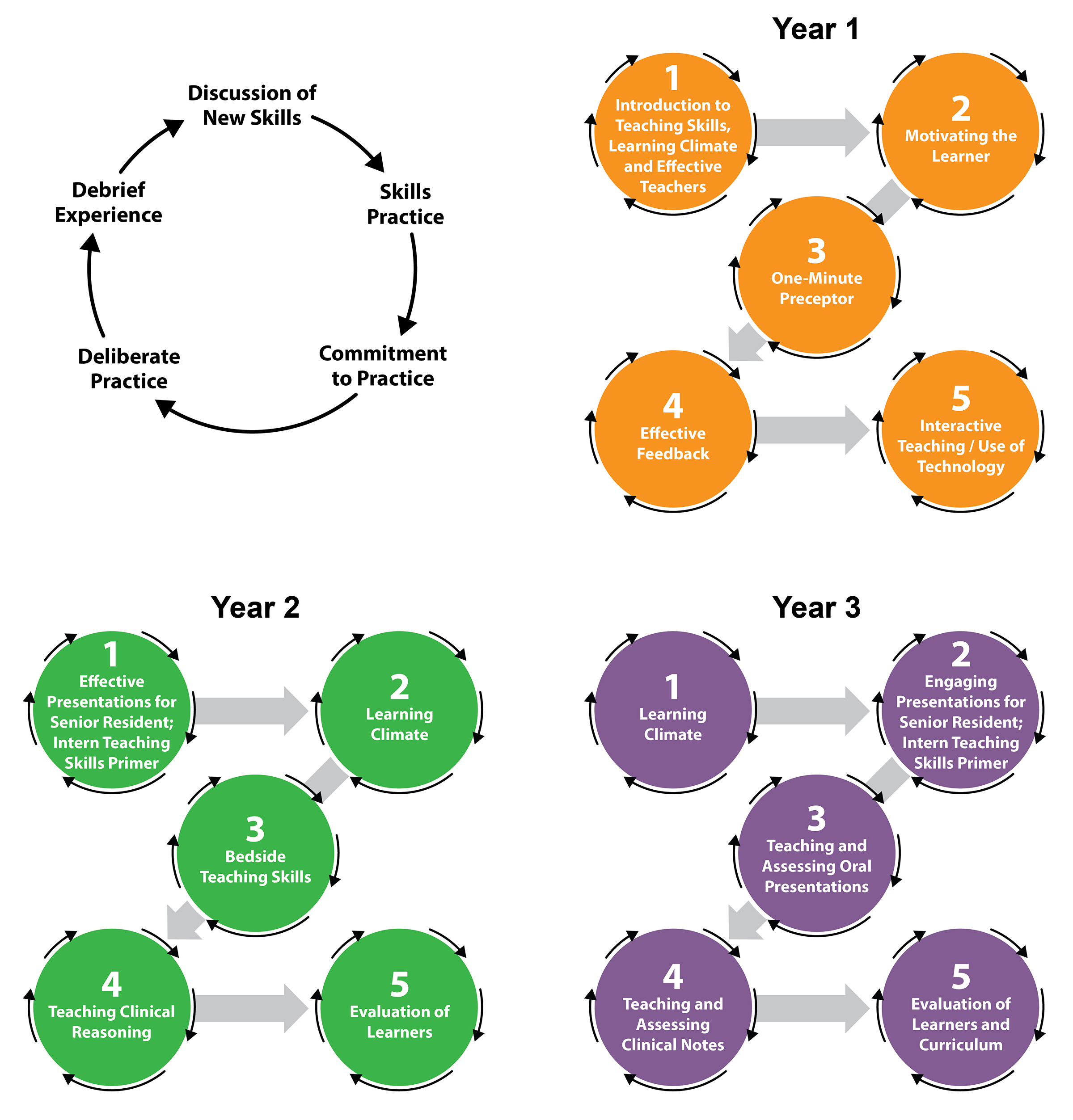Our Internal Medicine Residency Program places a high value on making sure that our residents can effectively pass on their skills. Even if they do not pursue careers in academic medicine past graduation, both the time they spend in training and in many informal ways well into their careers, the skills of a clinician educator are critical to performing good medicine. “Through needs assessment before developing curriculum,” Jane Rowat, MS, Educational Development Director, said, “we learned that the residents are very interested in teaching but few have had formal instruction in effective teaching skills.”
This is why Manish Suneja, MD, Program Director, and Rowat, together with the Resident Teaching Skills Committee, designed the Teaching Skills Curriculum, a longitudinal series built into the “Y” week of the “X+Y” curriculum. “This has been very much a collaborative effort,” Rowat said. At its base are a series of five workshops a year, with pedagogical instruction, skills development, practical application, and supportive, constructive feedback as part of each session. This rolling, three-year curriculum moves the internal medicine resident through more than a dozen deeply practical and persistent lessons in how to pass on what they learn daily.

One essential component in any curriculum is for learners to demonstrate that they can use the skills they have been taught. Similar to the Objective Structured Clinical Evaluation (OSCE) in which learners practice clinical skills with simulated patients, Objective Structured Teaching Evaluations (OSTEs) allow participants to practice teaching skills using standardized learners. OSTEs provide a unique opportunity for residents to improve their teaching skills through practice and formative, just-in-time feedback in a simulated environment. The OSTEs were developed and implemented by Suneja and Rowat with a group of internal medicine educators including Krista Johnson, MD, MME, and Lisa Antes, MD. The OSTEs allow every level of trainee a chance to demonstrate what they are learning in the Teaching Skills Curriculum.
For the teaching skills curriculum OSTE, the interns play the role of the standardized learner, the second-year residents teach the interns, and the third-year residents observe the teaching interaction and facilitate feedback on that instruction to the R2.
In five separate clinical education rooms in the Medical Education Research Facility, the teams run through their scenarios. After the intern delivers a scripted rundown on a “patient” just admitted, the R2 teaches using the “One-Minute Preceptor,” or “5 Micro Skills.” These skills include committing to a diagnosis or plan, probing for supporting evidence, reinforcing what was done well, correcting errors, and teaching a general rule or take-home point.
The R3 then asks the R2 teacher to self-assess their own teaching and use of the model, asks the intern to give the R2 feedback on their teaching, and then the R3 weighs in with their feedback for the R2 teacher. After some discussion, the R2s identify one teaching skill they want to improve and the teams re-run a portion of the scenario to practice that skill.
“Even in the course of an hour,” Antes said, “with the implementation of feedback from each other, the teaching and learning become more specific, directed, and natural by the re-run.” In a few scenarios, the intern encouraged the teaching R2 to “push them a little harder to explain their clinical reasoning,” Johnson said. “They want to learn and get feedback to improve their clinical skills.”
After the scenarios, the full group debriefs the session and shares effective teaching behaviors they observed as well as challenges they face in using the micro skills. Learners shared their own discoveries as well. “Asking someone ‘what do you think is going on’ is different I think than asking them ‘what is your diagnosis,’” second-year resident Mohsan Chaudhry, MD, said. Others had similar insights in their sessions, finding ways of delivering feedback that felt natural and effective. At the end, session organizers asked participants to evaluate the OSTE itself, as they look for ways to improve and refine the tool.
Both Antes and Johnson said they have enjoyed helping guide the OSTE sessions and look forward to continuing to use this valuable teaching tool in the curriculum. Leadership has also already begun to strategize how they might check back in later this year to evaluate whether the day’s lessons persist.
One comment on “Objective Structured Teaching Evaluations”